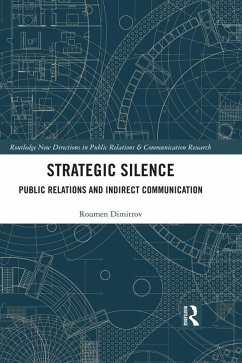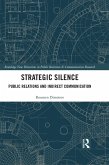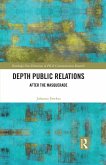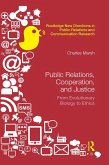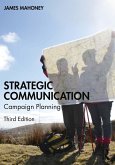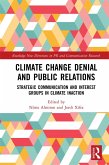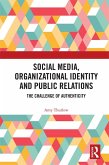Silence is neither separate from nor the opposite of communication. The inclusion of silence on a par with speech and non-verbal means is a vital element of any communication strategy; it opens it up for a new, complex and more reflective understanding of strategic silence as indirect communication.
Drawing on a number of disciplines that see in silence what public relations academics have not yet, this book reveals forms of silence to inform public relations solutions in practice and theory. How do we manage silence? How can strategic silence increase the capacity of public relations as a change agent?
Using a format of multiple short chapters and practice examples, this is the first book that discusses the concept of strategic silence, and its consequences for PR theory and practice. Applying silence to communication cases and issues in global societies, it will be of interest to scholars and researchers in public relations, strategic communications and communication studies.
Dieser Download kann aus rechtlichen Gründen nur mit Rechnungsadresse in A, B, BG, CY, CZ, D, DK, EW, E, FIN, F, GR, HR, H, IRL, I, LT, L, LR, M, NL, PL, P, R, S, SLO, SK ausgeliefert werden.
Irina Bokova, Director-General, UNESCO
This book shows that much remains to be done in the field of strategic communication, since for the first time silence as indirect communication and its fitting in the strategical dimension are analysed in detail. Dimitrov's work is not only pioneering; it is the most innovative and critical essay published inrecent years. From a broader perspective, it is already an indispensable book for communication theory.
Jordi Xifra, Professor, Pompeu Fabra University, Barcelona, Spain
This is a welcome addition to the stock of public relations literature, addressing a topic that is central to public relations practice, but has been widely neglected in scholarship until now. The importance of silence is continually under-estimated in public relations research yet, as Dimitrov points out, its presence saturates public relations work and merits investigation. Taking the reader on an eclectic journey characterised by an analytical approach that is both forensic and creative, Dimitrov incorporates traditional scholarship as well as insights from a sociology, psychology, philosophy, business, cultural studies - to name just a few of the disciplines - in order to understand the object of his attention. The result is a complex, engaging and ac

